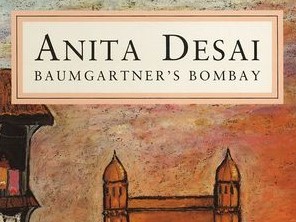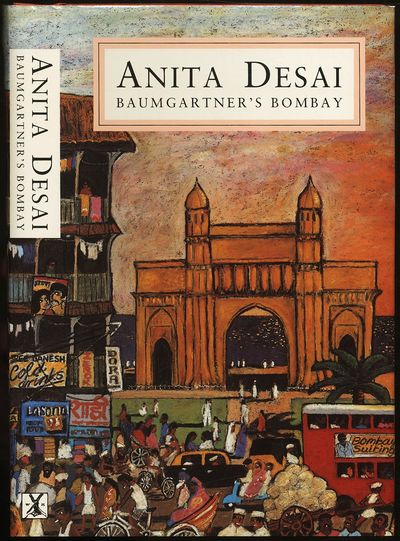“Certainly I see him as more than simply a Jew and a victim of Nazism. I do see him as an eclectic outsider. I also see him as a figure in Greek tragedy whose fate proves inescapable. It is also a meditation on history, on people crushed by racial violence. Especially in recent years, there has been a resurgence of it everywhere. I see people as trapped like flies in the web of such historical events“, (Desai, quoted in Krishnamoorthy 2003, 332) the author Anita Desai pointed out in 2001. Her German mother’s German expat friends in India inspired her to write the novel Baumgartner’s Bombay in the 1970s. Before the first research into exile in India during WW II had been undertaken, Anita Desai constructed the story of a German timber salesman Hugo Baumgartner, who flees to India to escape National Socialism. In his old age, lonely and neglected, he is murdered in his sleep for his silver racing trophies by a drug addict German backpacker.
In Baumgartner’s Bombay, Desai succeeds in mixing several major historical events across continental borders. Baumgartner’s German-Indian story guides readers through German anti-Semitism and the Holocaust, through Indian Partition and Independence.
The son of a Jewish furniture storeowner, Hugo Baumgartner first loses his father, then his inheritance and his apartment in Nazi Germany. He escapes to India, reluctantly leaving his mother behind in Berlin, and begins to build a living as a buyer of tropical wood in Calcutta. When the war breaks out, he is interned for six years. On his release into war-torn Calcutta in the post-war months, he is unable to pick up his old life due to a lack of capital, networks and contacts. His life has been completely “unhinged” by the political events of the war and post-war years in India, and he is constantly losing his belongings, his home and his sources of income.
When he also loses his Muslim business partner from the pre-war years and his Marxist housemate in a night attack, Baumgartner flees Calcutta for Bombay, where he is overtaken by the political unrest caused by the uprising of the Indian Navy against the British.
Baumgartner’s is a broken existence in exile, but he gets on his feet again in Bombay. A new business partner becomes a friend and partner in the purchase of a prize-winning racehorse and the racecourse becomes his new stage and source of income. But when the business partner suddenly dies, Baumgartner loses his share of the business due to the lack of written agreements and is forced to withdraw into private life – yet another break in existence and identity. He swaps the racing course and business office for an apartment full of cats and visits to his alcoholic German friend Lotte.
The secondary character of Baumgartner’s Bombay, his German friend, the dancer Lola, or “Lotte”, allows us to witness female poverty in exile and the female survival strategies on which official, and also private, sources are mostly silent. Lotte enters into a “white marriage”, a fictitious marriage, to escape internment. Before the war she had worked as a dancer in a nightclub in Calcutta, although it is not clear whether she was also involved in prostitution. Her “husband” buys her an apartment in Bombay to keep her away from his family and gives her the money to open a business. Lotte opens a small hat shop that she runs with two Anglo-Indian employees who copy models from international fashion magazines. However, her hats find no buyers because Lotte has no access to the elitist and western society of Bombay. When her “patron” Kantilal dies, she has to move out of her apartment in an upscale Bombay residential area, as his sons do not acknowledge her and there is no sales contract in her name. Using the small financial compensation she has been given, she moves into her former small business premises in a shabby area and indulges in alcohol.
In a dramaturgical way, Lotte personifies the fate of single female exiles who had no place in post-colonial Indian society in the absence of family connections. Both Lotte and Baumgartner, because of their skin colour, become outsiders in Indian society and ostracised by the German-speaking émigré community because of their social status. Both had got involved with Indians who had disappeared from their lives: Lotte was not a married, financially secure Indian lady and Baumgartner was not a businessman with Indian shares, capital, reputation and connections. The exiles Hugo Baumgartner and Lotte were emigrants who “involuntarily voluntarily” stayed in India for the simple reason that they had no other option.
The figure of the Clochard-like Baumgartner represents the possibility of addressing poverty in exile. Baumgartner is an antithesis to the successful exile in India (like Joe Schimmel or Emanuel Schlesinger), economically ruined by the death of his “informal” business partner and living a lonely existence with dozens of cats, which he feeds with leftovers from restaurant kitchens. He is neither a member of the Willingdon Club nor the Breach Candy Club, does not go to art exhibitions and does not participate in the activities of the Jewish Relief Association. Baumgartner’s Bombay deals with poverty, prostitution, fictional marriage, and the social exclusion of destitute exiles within the exile community and takes the reader into the "inner landscapes" of the most unfortunate of them. Baumgartner’s Bombay is thus a portrait of the “wounded survivor” (Swain 2001, 411), of whom there were probably many in exile in India. But the historical sources are largely silent about them.


